My son bought me a copy of David Ellwand’s “Retro Photo” for my birthday in June. An excellent book, it is a guided tour of his camera collection, with examples of the pictures he has taken with them. It soon became obvious that most of these cameras were lovely to look at but out of my price range, until I got to page 80 – Box Cameras. I had never considered them before, but here were cameras which produced interesting, even acceptable, results, and readily available on a well known auction site for peanuts. I decided to give it a go.
A few weeks later I was the owner of a Zeiss Ikon Box Tengor 54. As I see it, apart from the usual hazards of loading and unloading 120 roll film, one of the drawbacks of box camera photography is the economics of it – most cameras only give eight 9×6 images on a roll. The Box Tengor 54 is more generous, with sixteen 6×4.5 pictures. Produced in the 1930s, it has two apertures, f/22 and f/11, and two focus settings, 3ft-10ft and 10ft-infinity.
As for the shutter speed, that brings me to the other slight drawback. The speed on a lot of these boxes is usually around 1/30, or even slower, so a very steady hand or a tripod may be required. Not wanting to carry extra gear around, I went for a different solution. The shutter is basically a curved slot cut into a metal disc, which rotates rapidly when you press the release lever. As the slot passes over the aperture, light hits the film. So, using a couple of pieces of black tape, I covered over the ends of the slot, reducing the amount of time that the shutter is open to something like 1/60. A few sums told me that with 400 speed film, f/11 should be OK in full shade, and f/22 for anything bright. Maybe a couple of stops overexposed in full sun, but close enough.
The box went with me on holiday to Cornwall, and I decided to try and document our favourite walk, from Bodinnick to Polruan along the River Fowey, and then across to Fowey itself. Some of the shots were a bit rushed, but on the whole it seems to have worked out OK. For a camera coming up to ninety years old, it doesn’t do too bad.
My thanks go to my fellow walkers, Sam & Alfie, for putting up with the repeated routine of stop, glasses on, camera out, struggle to see the viewfinder in bright light, steady the camera, click, wind on, camera away, glasses off, walk on!
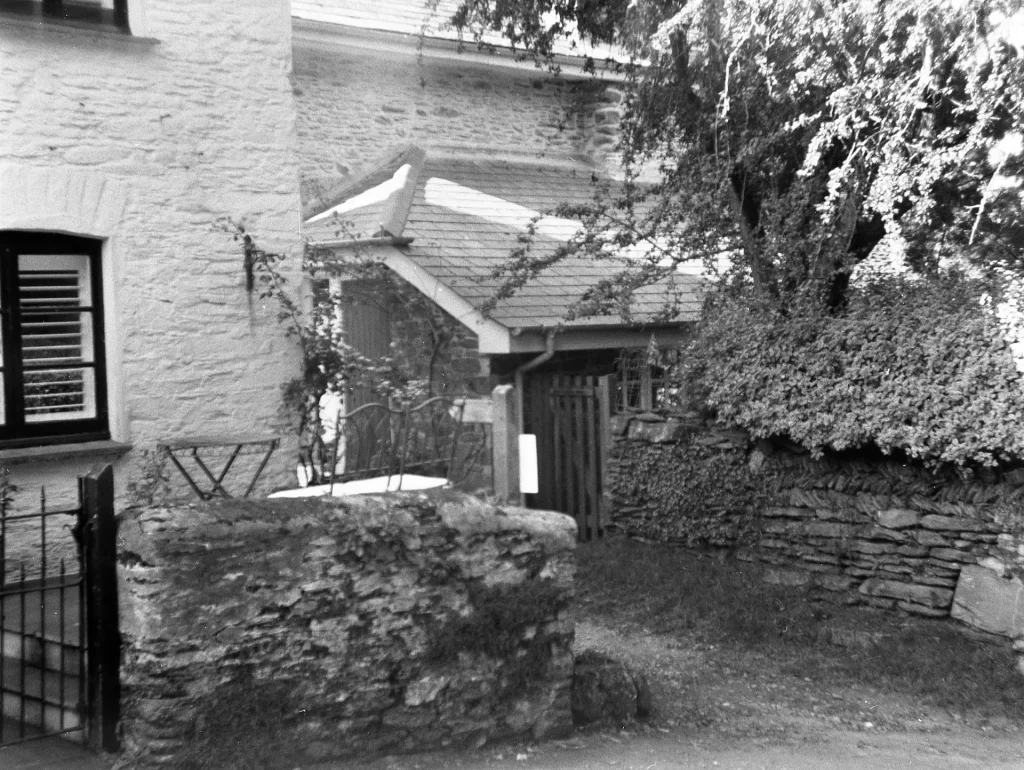
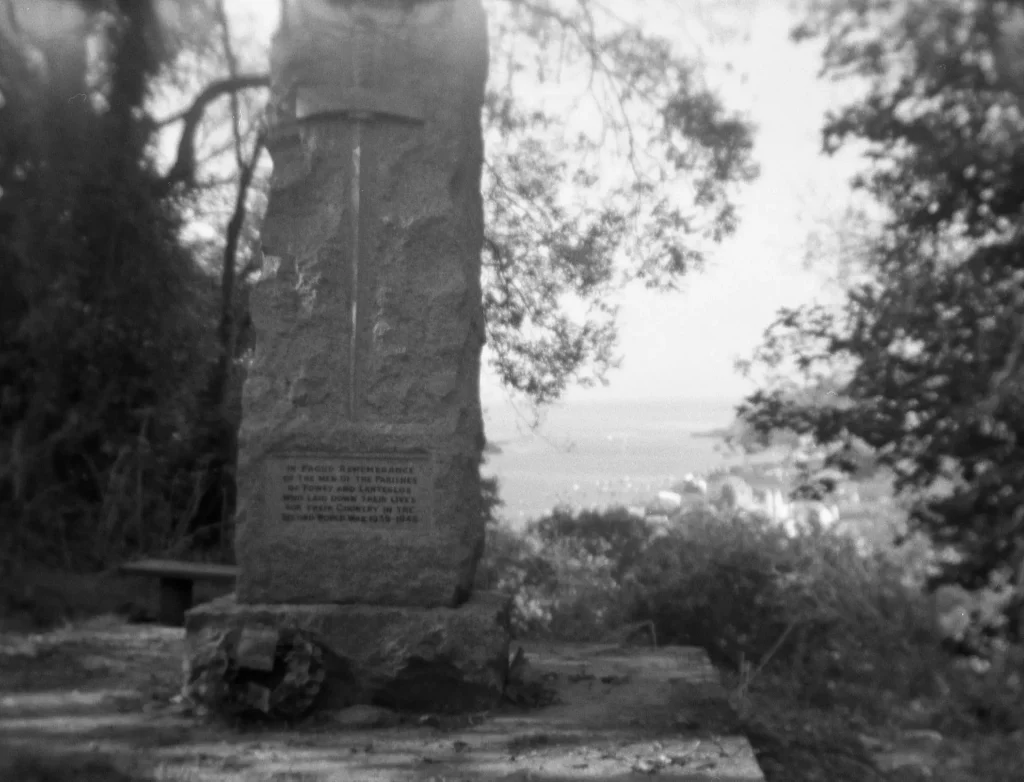
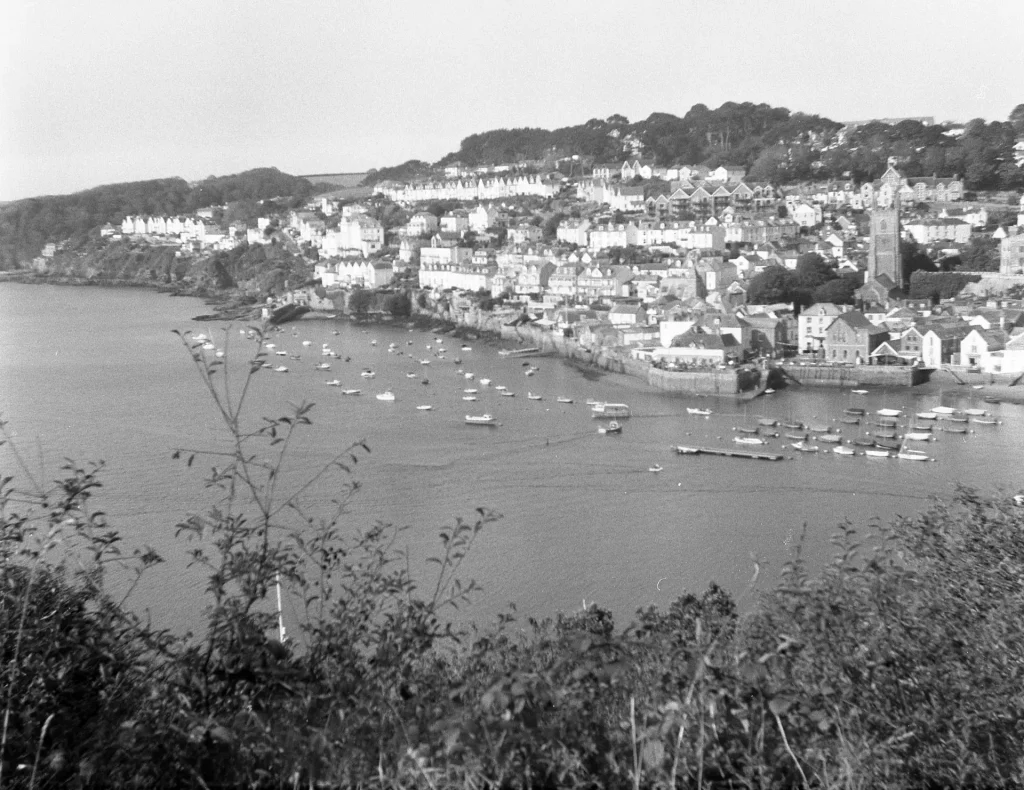
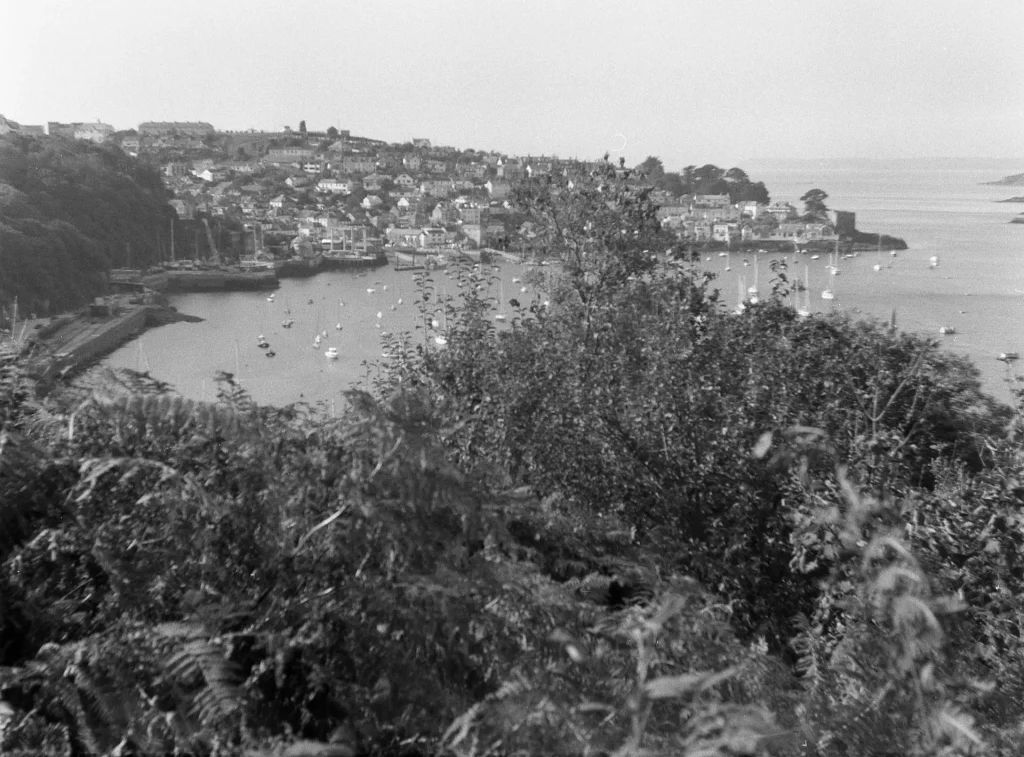
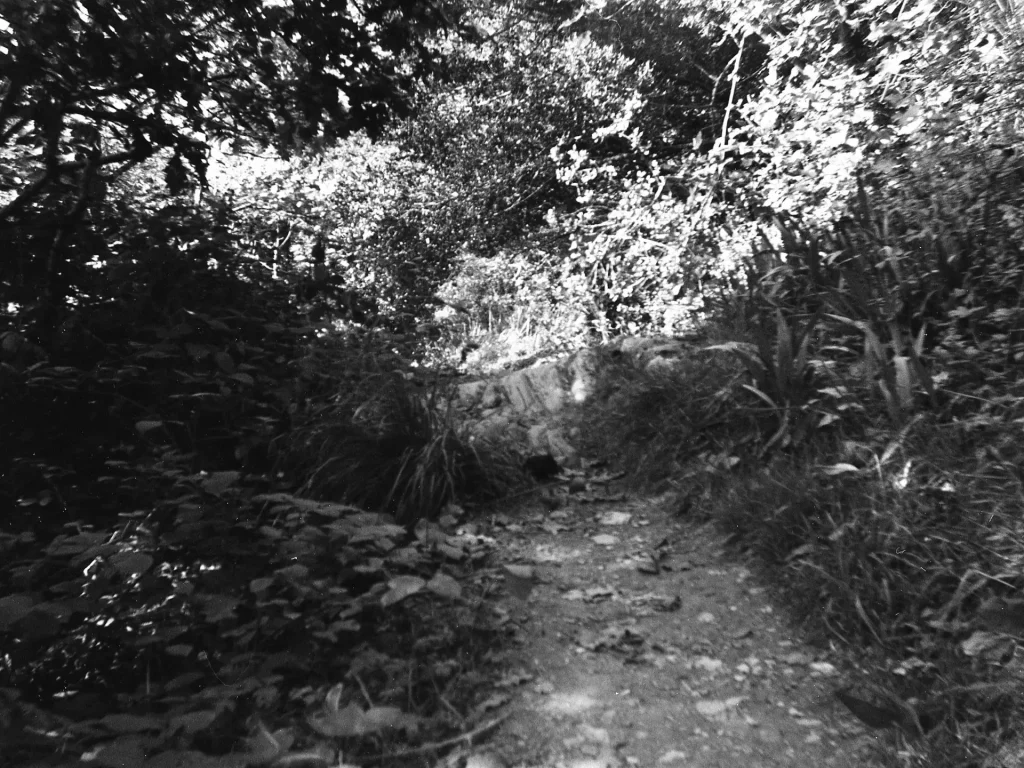
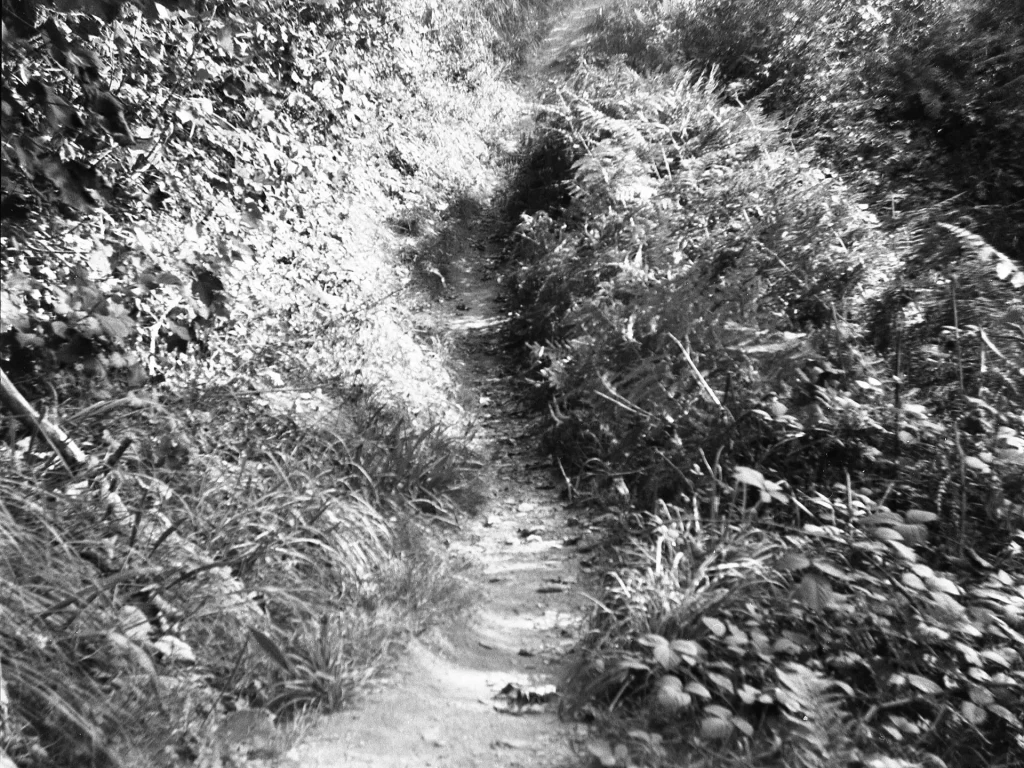
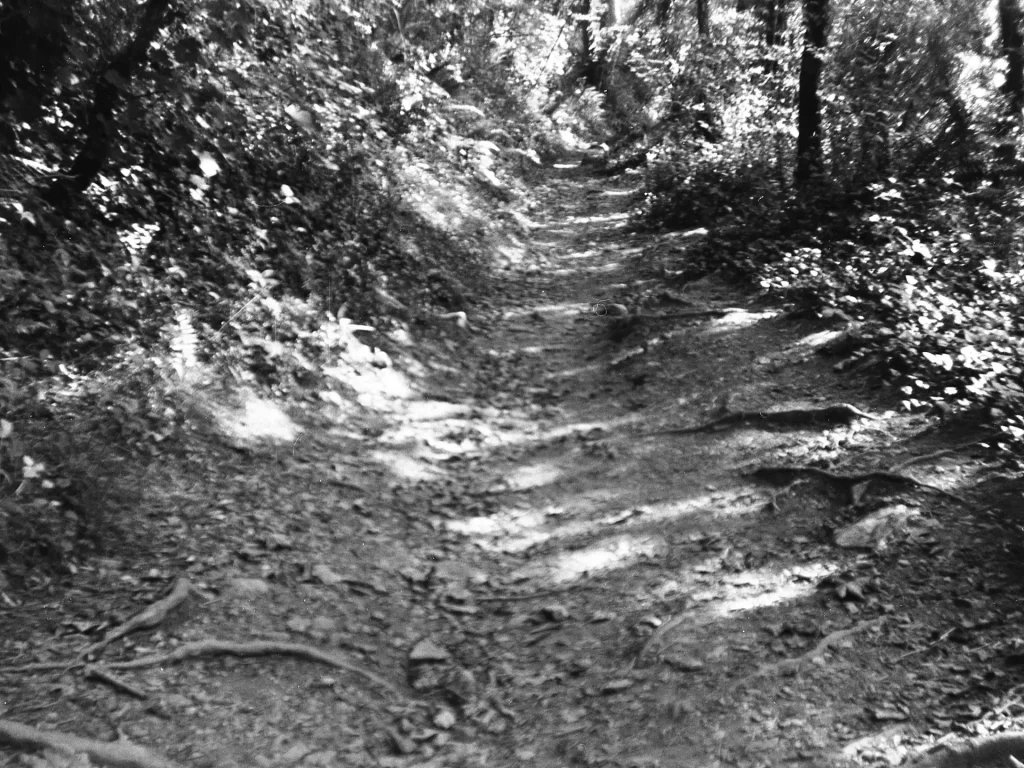
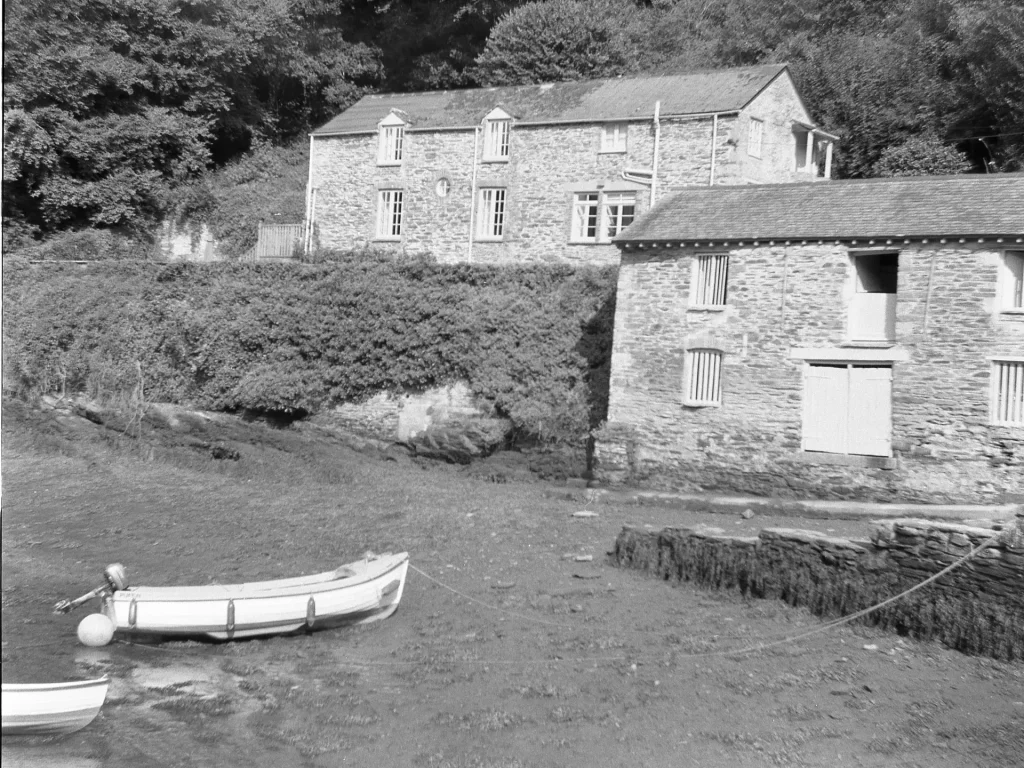
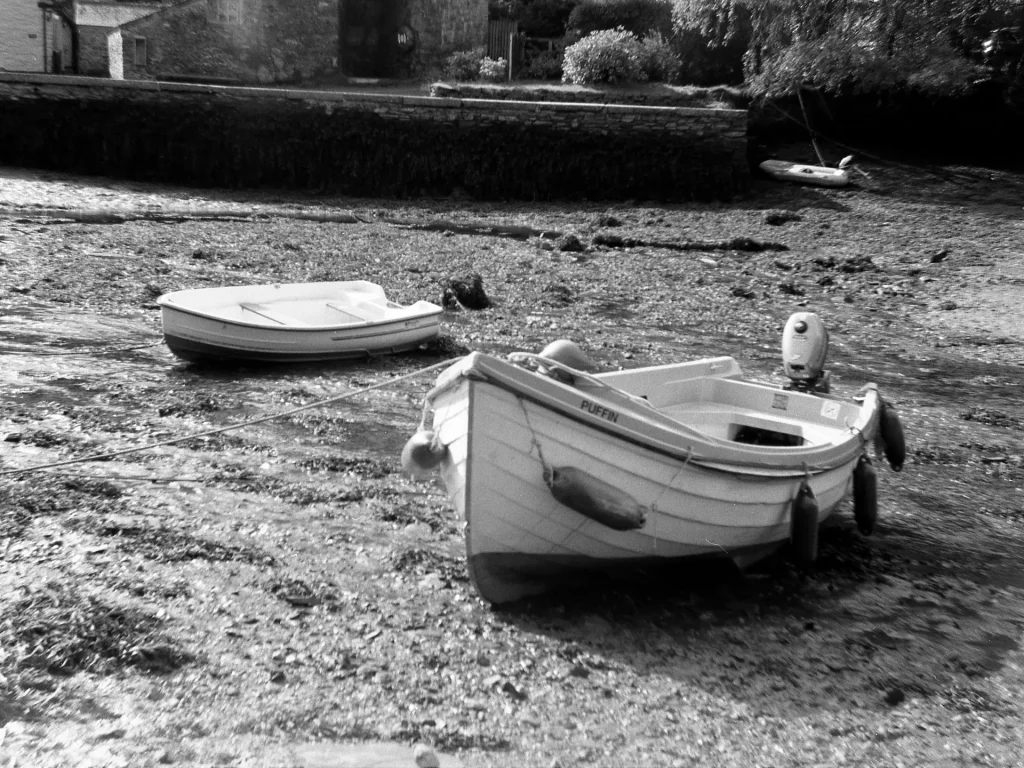
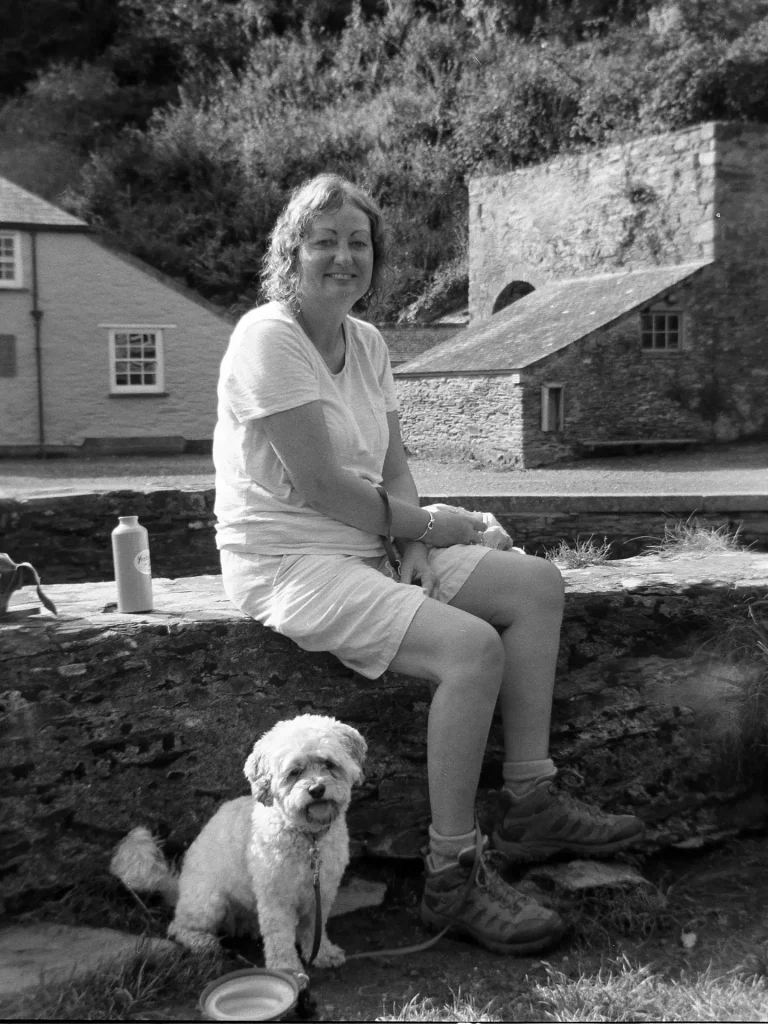
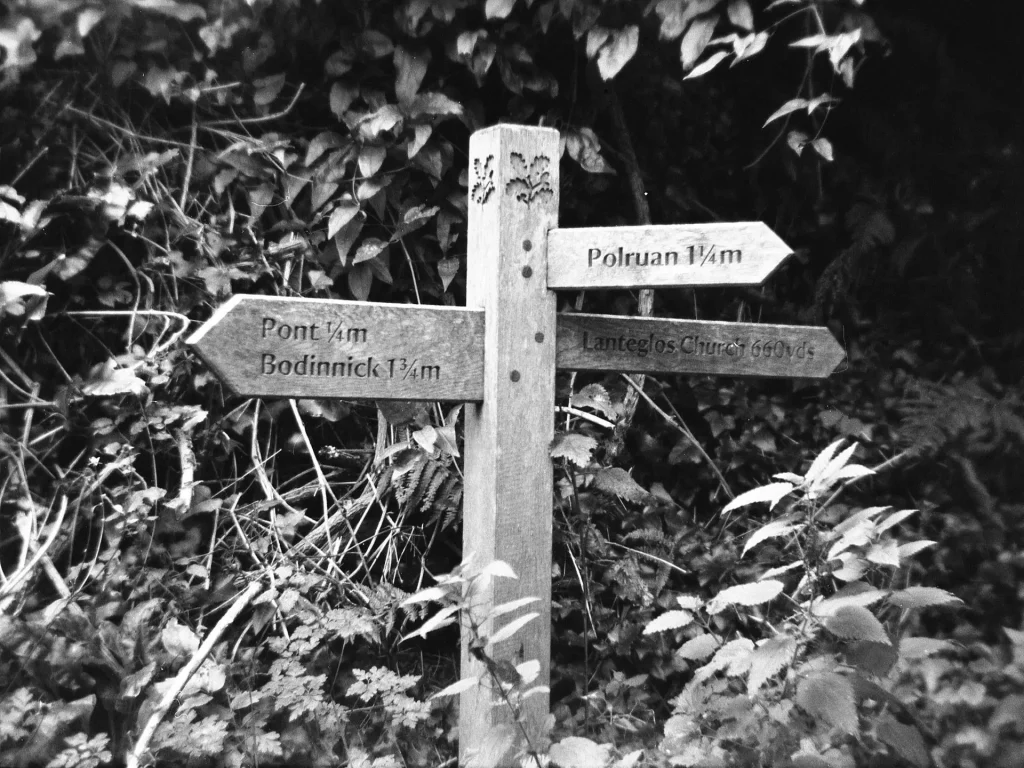
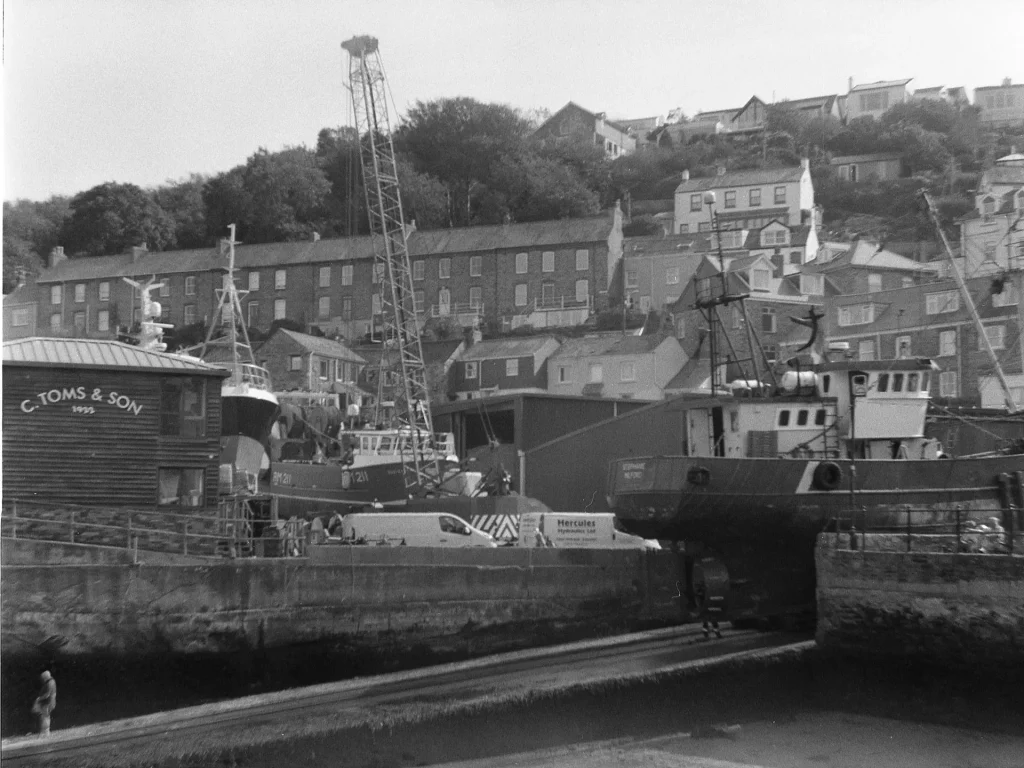
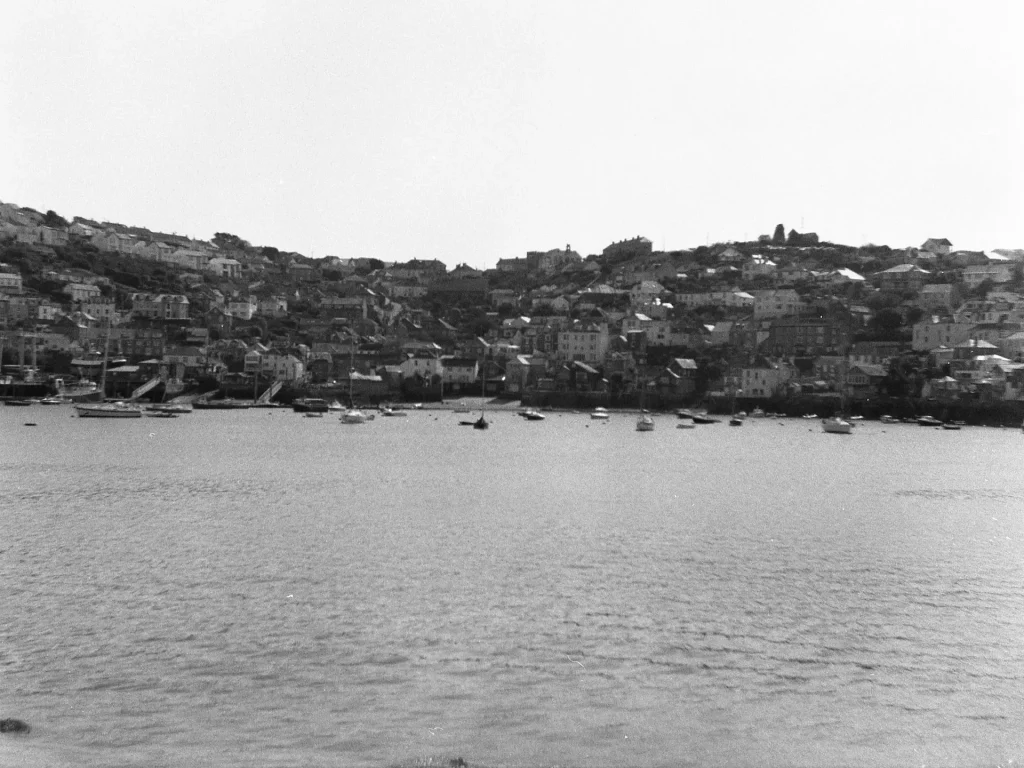
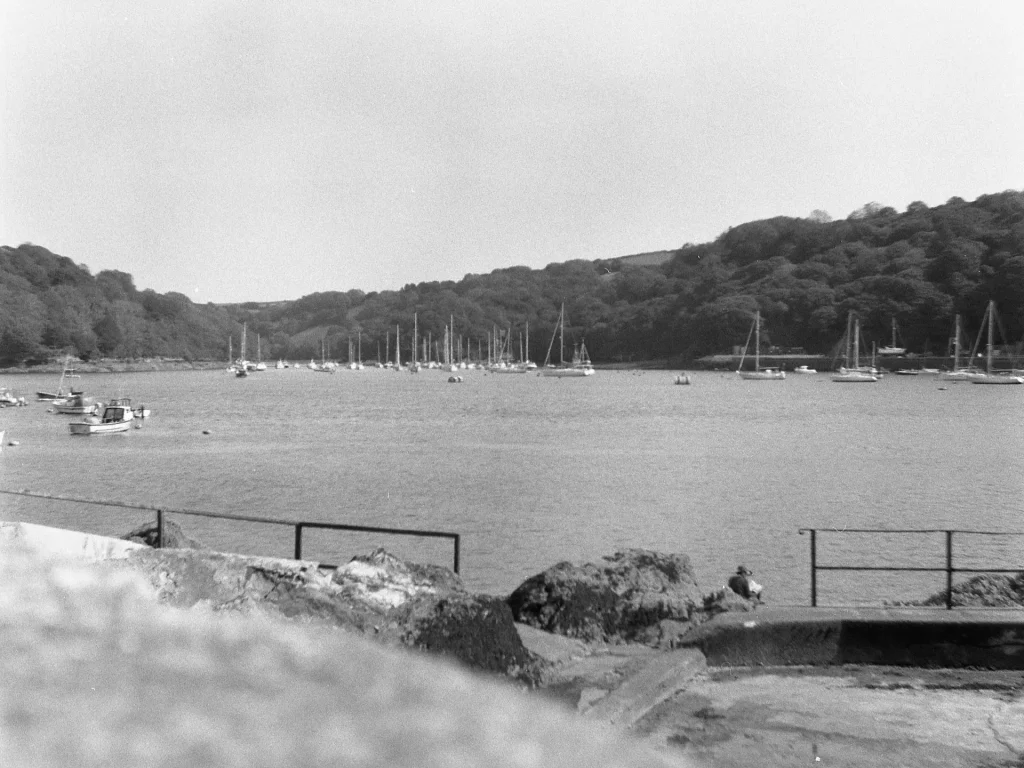
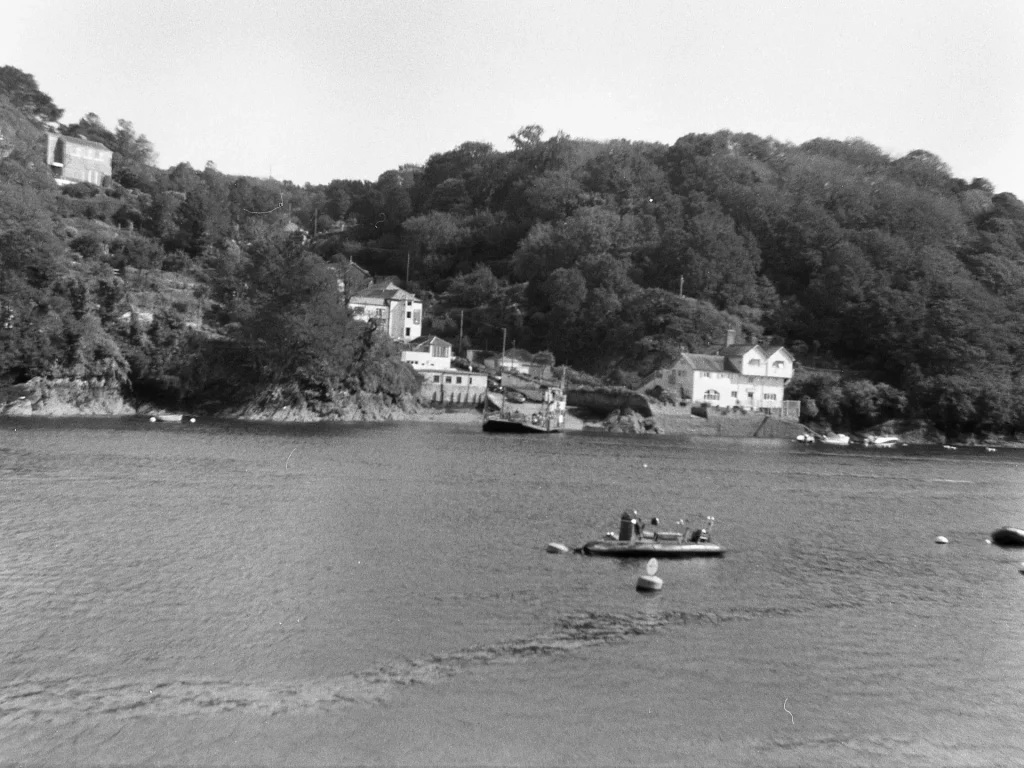
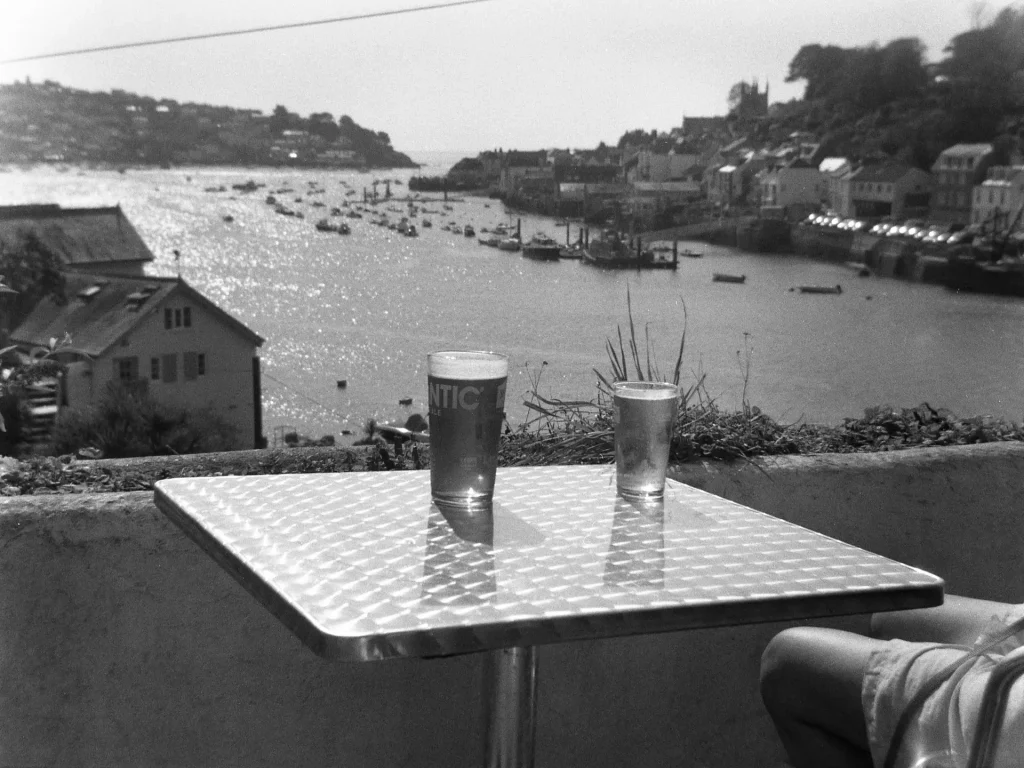
Thanks for getting to the finish with me.
Steve Phillips
Instagram
Share this post:
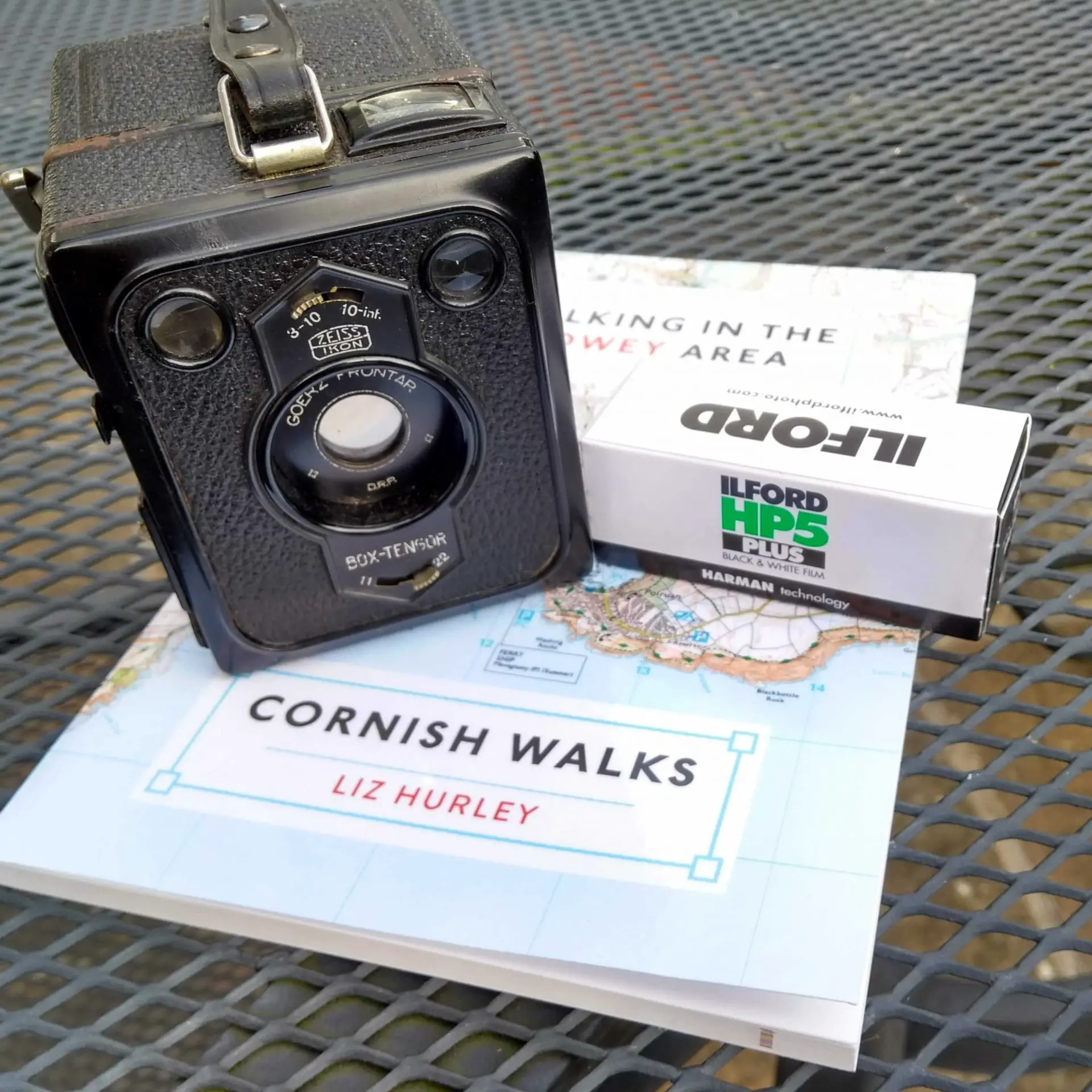








Comments
Lilianna Diane Elrod on 16 Frames / A Whole Roll of Ilford HP5+ in a Box Tengor 54 – #FullRollFriday – by Steve Phillips
Comment posted: 09/10/2020
One does not need elaborate gear to make lovely images.
And you demonstrate this well!!
Comment posted: 09/10/2020
Bernhard on 16 Frames / A Whole Roll of Ilford HP5+ in a Box Tengor 54 – #FullRollFriday – by Steve Phillips
Comment posted: 09/10/2020
Best regards
Bernhard
Comment posted: 09/10/2020
Martin South of France on 16 Frames / A Whole Roll of Ilford HP5+ in a Box Tengor 54 – #FullRollFriday – by Steve Phillips
Comment posted: 10/10/2020
Comment posted: 10/10/2020
Eric Norris on 16 Frames / A Whole Roll of Ilford HP5+ in a Box Tengor 54 – #FullRollFriday – by Steve Phillips
Comment posted: 10/10/2020
Your mention getting more shots per roll. The Clack created 6x9 negatives—just 8 shots per roll—but I kind of like that. I concentrate on each shot, but it doesn’t take weeks to shoot a roll like it does with 36-shot 35mm.
P.S. My wife has a saying that she would have invoked early in your walk: “Scenic enough here. Let’s go back!” Your Sam is much more adventurous!
Comment posted: 10/10/2020
Comment posted: 10/10/2020
Kodachromeguy on 16 Frames / A Whole Roll of Ilford HP5+ in a Box Tengor 54 – #FullRollFriday – by Steve Phillips
Comment posted: 10/10/2020
Comment posted: 10/10/2020
AW on 16 Frames / A Whole Roll of Ilford HP5+ in a Box Tengor 54 – #FullRollFriday – by Steve Phillips
Comment posted: 12/10/2020